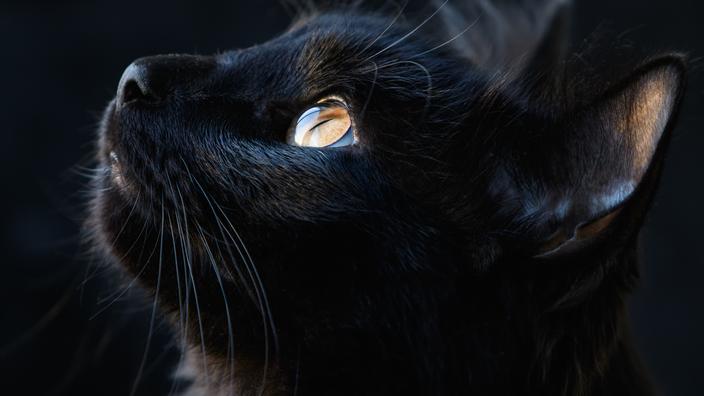While fall has been here for a few weeks and
Halloween is
approaching, it is the most iconic animal of this period:
the black cat
.
Incarnation of the devil, companion of witches for some, lucky charm for others, the black cat is at the center of many myths and beliefs.
To discover
Garden: what to plant, sow or harvest in November?
November: what are the seasonal vegetables and fruits?
Black cat: devil, witch and superstitions
However, other ancient Egyptian beliefs also make the black cat the symbol of the traitor and the demon.
The legend then assimilated the black cat to a black Ethiopian representing the Devil.
If we can go back to the time of ancient Egypt to find traces of superstition around cats with black coats, it is in the Middle Ages that they really took off.
In France, until the 9th century, the cat, regardless of the color of its coat, was considered a useful animal, because it was able to protect crops from rodent invasions.
In Europe, in the Middle Ages, the cat (especially those with black coats) became the symbol of the demon or the devil.
Denounced as the embodiment of evil and witchcraft by the Catholic Church, he is hunted down, hunted and killed.
Cats were also burned alive on the feast of Saint John.
Owners of black cats are seen as wizards or witches who are suspected of turning into cats.
To read also "Black cat", "number 13" ... These superstitions which always make us shudder
This is, moreover, one of the hypotheses on the origin of the myth of the 9 lives of the cat.
Indeed, it was thought at the time that witches could reincarnate 9 times in a row as a cat.
The tracking and extermination of cats (black in particular) lasted until the 17th century, when the various epidemics of Plague and the multiplication of pests, gave cats their place in society.
Also read Did you know that Ireland is the country of origin of Halloween?
When the black cat becomes a lucky charm
If the fate of black cats was disastrous across the world for centuries, it was not the same everywhere!
In Scotland or England, or France during the Celtic period, black cats were seen as lucky charms.
The Celts even considered that killing a cat could bring the perpetrator up to 17 years of misfortune.
In Brittany, it was considered that whoever found a single white coat on a black cat could bring good luck.
The white hair was taken and kept as a talisman against the evil one.
International Black Cat Day
Despite the centuries, the
black cat
remains apart from other felines.
So much so that black cats have their own international day!
If August 8 is anchored as the international day of cats, the black cat is celebrated around the world
on August 17
.
Read alsoDay of the Black Cat: Will you get to the end of this test on superstitions?
If this day can make you smile, it actually has a very specific goal: to fight the preconceived ideas and latent superstitions about black cats.
Even if they are no longer hunted down or killed, shelters and animal protection associations still note that a kitten or black cat is statistically more abandoned than other felines by its owner.
He would also be more often the target of violence on the part of their masters.
Finally, cats or kittens with black coats take longer to be adopted when they are in shelters.
The day dedicated to them therefore aims to promote the adoption of a cat with a black coat.







/cloudfront-eu-central-1.images.arcpublishing.com/prisa/MI23BCFOBJATJDOOM7KTWZGRLU.jpg)